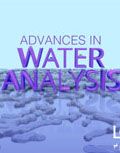Optimizing Analytical Methods for Water Analysis
Spectroscopy E-Books
Detecting trace levels of contaminants in water samples requires an optimized set of methods for sample preparation, liquid chromatography (LC), and mass spectrometry (MS). For advice about these methods, LCGC talked to Damià Barceló, a leading researcher in water and environmental analysis. Barceló is a research professor with the Scientific Research Council (CSIC) of the government of Spain, at the Institute of Environmental Assessment and Water Research (IDAEA) in Barcelona. He is also the director of the Catalan Institute for Water Research (ICRA) in Girona. He has published more than 775 peer-reviewed papers on water and environmental research.
Read more
.
Best of the Week: AI and IoT for Pollution Monitoring, High Speed Laser MS
April 25th 2025Top articles published this week include a preview of our upcoming content series for National Space Day, a news story about air quality monitoring, and an announcement from Metrohm about their new Midwest office.
LIBS Illuminates the Hidden Health Risks of Indoor Welding and Soldering
April 23rd 2025A new dual-spectroscopy approach reveals real-time pollution threats in indoor workspaces. Chinese researchers have pioneered the use of laser-induced breakdown spectroscopy (LIBS) and aerosol mass spectrometry to uncover and monitor harmful heavy metal and dust emissions from soldering and welding in real-time. These complementary tools offer a fast, accurate means to evaluate air quality threats in industrial and indoor environments—where people spend most of their time.
